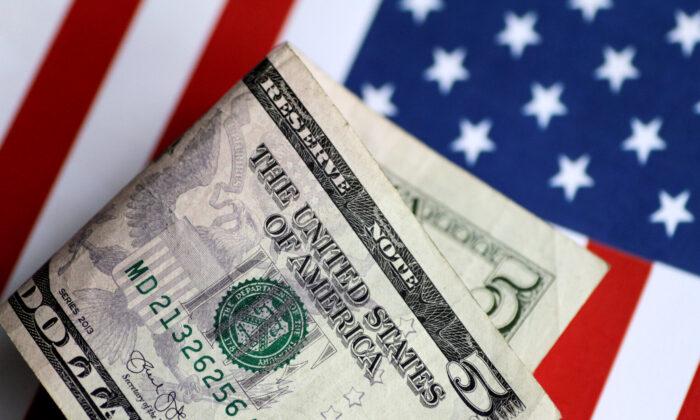The dollar eased on Tuesday after its rally the previous day, but still hovered near a one-month peak as traders raised their bets on how high the U.S. Federal Reserve would need to raise interest rates to tame inflation.
The big mover on Tuesday was the Australian dollar, which surged as much as 1 percent to an intra-day high of $0.6952, after the country’s central bank raised cash rate by 25 basis points and said more increases would be needed, a more hawkish policy tilt than many had expected.
The currency was last trading at $0.69415.
“By stating that, in its view, inflation will stay high for a protracted period, the RBA is undermining any thoughts of easing later this year or early next,” said Rob Carnell, ING’s regional head of research, Asia-Pacific.
“This will lift longer-term bond yields and short-term rate expectations. It will give the AUD (Australian dollar) a boost too.”
Focus on Tuesday will be on Fed Chair Jerome Powell’s speech at the Economic Club of Washington, at which Commerzbank analysts expect him to sound hawkish, which might give the dollar another lift.
“He has the chance to walk back some of the commentary that he made on Wednesday last week that prompted this dovish read,” said Simon Harvey, head of FX analysis at Monex, but added that he does not expect any new messaging from Powell.
Markets have been recovering from the shock of Friday’s U.S jobs report, which showed that nonfarm payrolls surged to 517,000 in January, pointing to a resilient labor market.
The report wrongfooted traders that were banking on an imminent pause in the Fed’s rate-hike cycle and gave the U.S. currency a leg up, though it gave back some gains in Asia trade.
The dollar index, which measures the greenback against a basket of six rivals, made a brief breach of Monday’s one-month highs, and was last trading at 103.52, roughly flat on the day.
The euro fell 0.1 percent to $1.0695, having fallen earlier in the day to its lowest since Jan. 9.
“Markets were really caught long on this whole risk-on move that was occurring at the beginning of the year,” said Monex’s Harvey.
“There’s been a bit of a sudden realisation for markets that the central banks are casting the right message here—that policy is going to have to remain restrictive for a bit longer and the idea of an immediate easing in the second half of the year isn’t necessarily a foregone conclusion.”
U.S. interest-rate futures show that markets are expecting the Fed funds rate to peak just above 5.1 percent by June, compared with expectations of a peak below 5 percent prior to Friday’s jobs report.
Sterling was last 0.1 percent higher against the dollar at $1.20275, after tumbling to a one-month low of $1.2006 in the previous session.
Investors are looking for further commentary from central bankers this week following what was viewed as a dovish outcome of Bank of England’s meeting last week.
In Asia, the Japanese yen attempted to make back Monday’s losses, with the dollar-yen pair down 0.6 percent at $131.78, moving away from Monday’s one-month low of 132.90 per dollar.
Data on Tuesday showed that Japan’s real wages rose in December for the first time in nine months, though uncertainty remains over whether pay hikes will continue to sustain the country’s economic recovery.
“I don’t think the BOJ will reverse monetary policy,” said Tina Teng, market analyst at CMC Markets, on market hopes the central bank will abandon its yield curve control policy once a new governor takes office.
“There are still economic concerns, there are still recessionary risks.”





